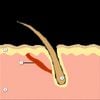community 2.5 Months Pyrilutamide. 1 Month Dutasteride Mesotheraphy & Topical Dutasteride. 3 Years Topical Minoxidil.
A user's progress with hair loss treatment, which includes pyrilutamide, dutasteride mesotherapy and topical finasteride, as well as 3 years of minoxidil use. It also discusses whether or not the poster may have had a hair transplant.
